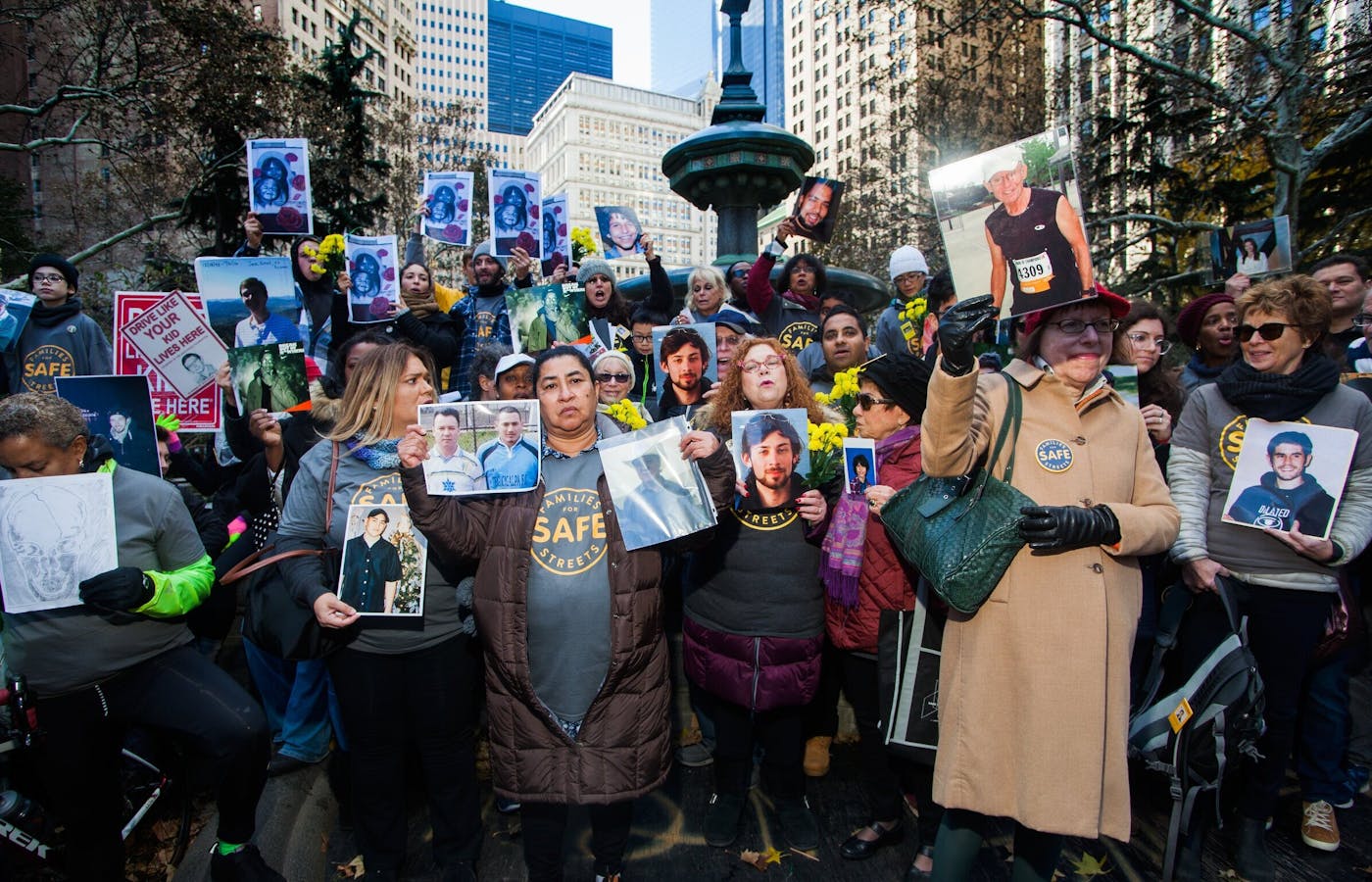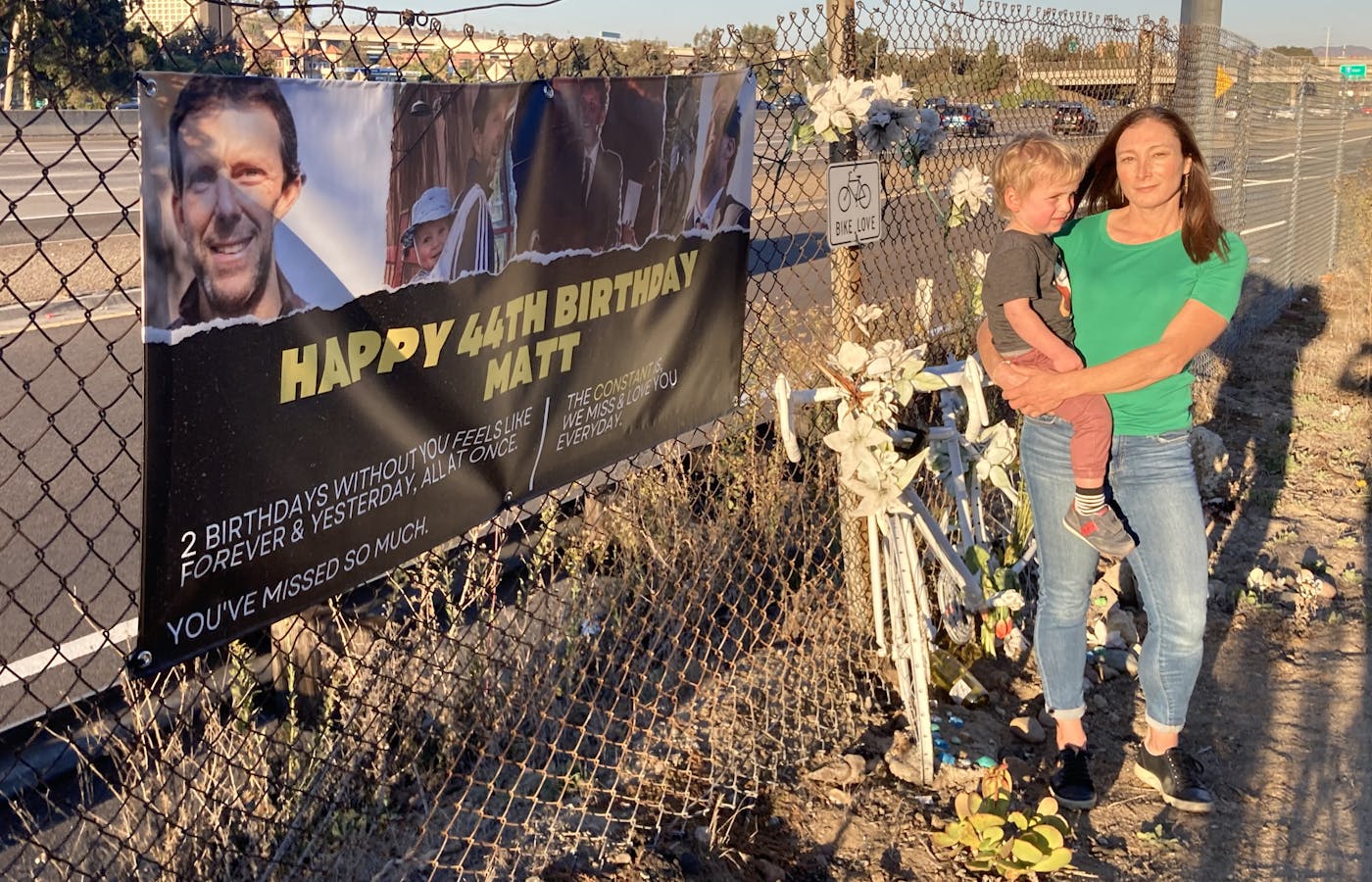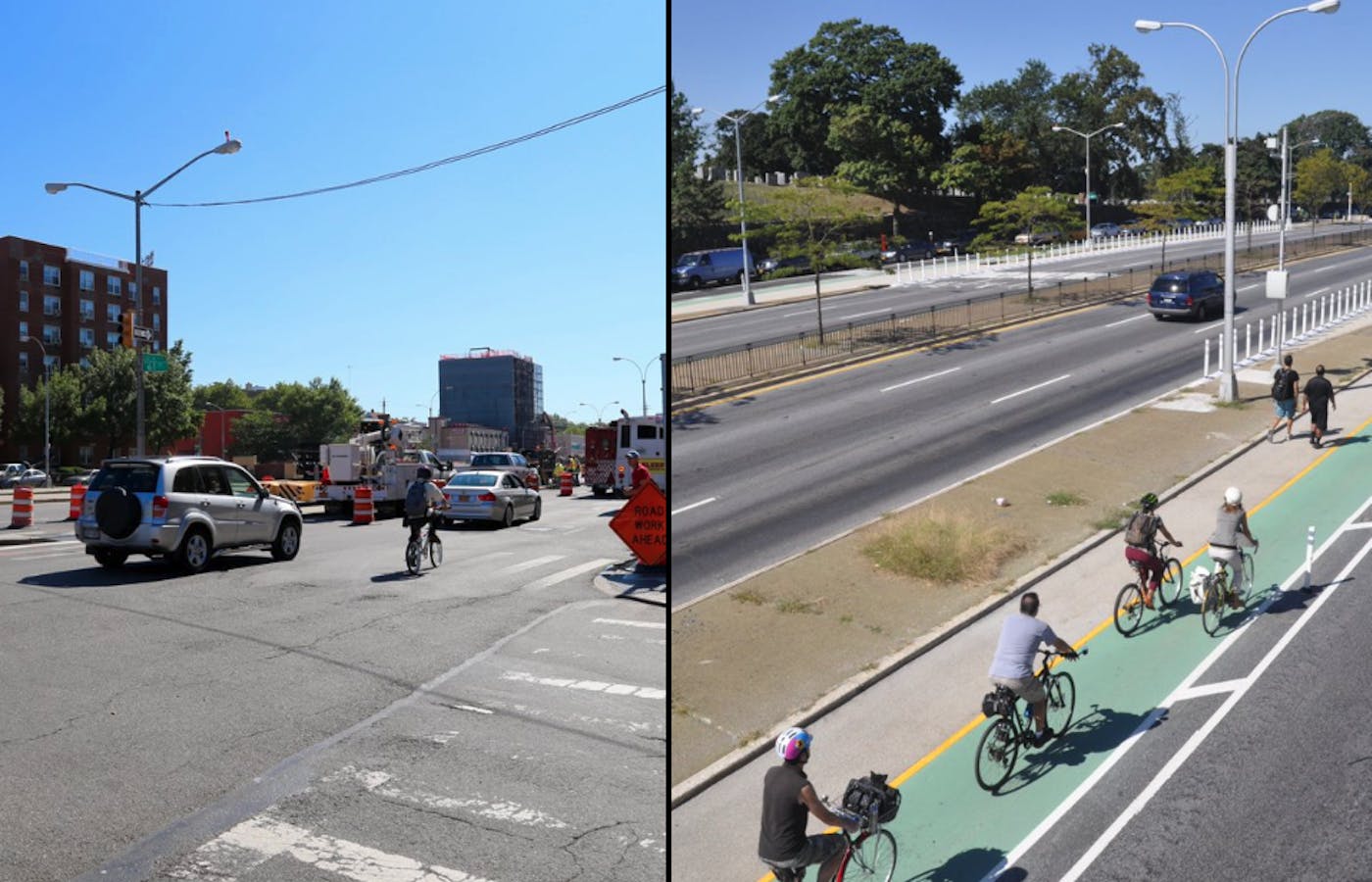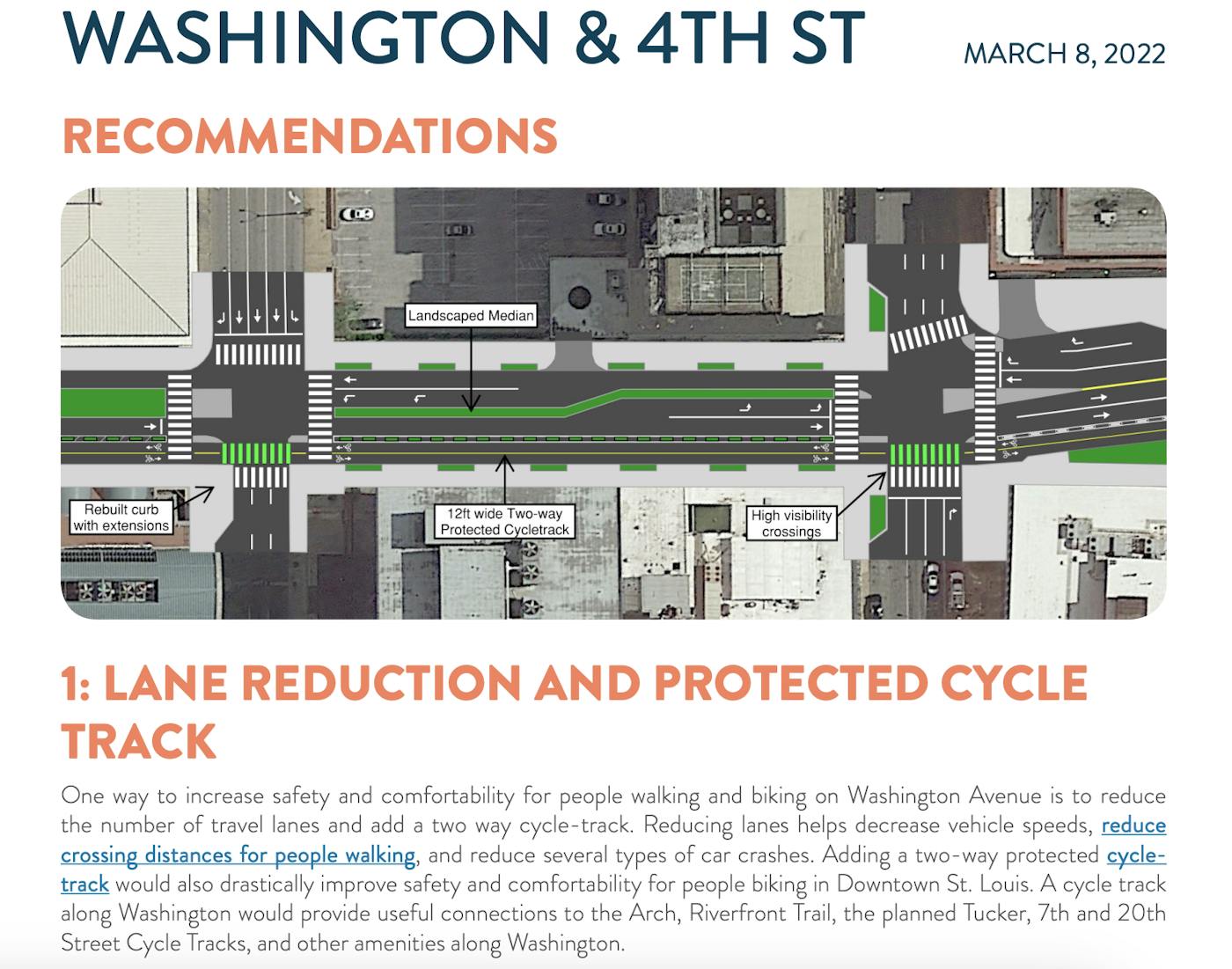Better Bike Infrastructure Saves Lives
By: Kiran Herbert, content manager

With U.S. cyclist injuries and deaths at an all-time high, now is the moment to demand the protected bike lanes, road diets, and intersection treatments that make our communities safer.
There are places that are good for bicycling and then there’s Amsterdam, where the entire city feels as if it’s built around cyclists. To drive a car in the city’s center is to be constantly surrounded by swarms of bikes who ride in packs and without fear for their lives. In Amsterdam, the movement of cyclists is prioritized over that of drivers, but that hasn’t always been the case.
In the 1950s and 1960s, Dutch cities weren’t too far off from the American cities of today, where precedence is given to moving single-occupancy motor vehicles above transit, bicycle, or pedestrian traffic. At the time, the growing number of cars saw bike trips plummet across the Netherlands — entire neighborhoods were destroyed to make way for car traffic — and accordingly, the number of traffic deaths began to rise. In 1971, they hit a peak of 3,300 deaths, 400 of which were children.
For the Dutch, this would not stand. In the early 70s, “Stop de Kindermoord,” or “Stop the Child Murder,” became the rallying cry of a group of concerned citizens, many of them mothers, calling on the government to fund the construction of protected bike lanes. Thousands took to the streets and the protests, which coincided with a global oil crisis, worked: The Dutch government began building a network of connected, separate bike paths. The number of people on bikes grew exponentially, and pedestrian and bicyclist fatalities declined significantly.
By the end of the decade, bicycle paths were built into every new neighborhood and along all major roads. Public outrage at the loss of life translated into tangible change and today, Amsterdam continues to have one of the lowest traffic fatality rates in the world. That change, while monumental, isn’t out of reach for the United States. It does, however, require a shift away from the idea that safety is the responsibility of the user — be they a walker, driver, or bicyclist — and towards an understanding that altering our built environment is how we save lives.
When it comes to cyclist and pedestrian deaths, the U.S. today is much worse off than Amsterdam was 60 years ago and deaths are trending upwards. In the last 12 years, fatalities for people walking and biking have increased by 60%. The National Safety Council estimates more than 46,000 people in total across modes were killed in motor vehicle crashes in 2022. That’s the equivalent of a plane crashing every single day for a year, a level of catastrophe we would never stand for.
Yet, most of us do nothing, our lack of protest being a quiet acceptance of the status quo. The exception, of course, are those who have directly experienced the epidemic of traffic violence. People like Laura Keenan, a San Diego woman who lost her 42-year-old husband, Matt Keenan, in September 2021.
Matt, an avid cyclist, had been hit by a car before, an experience that shook him to his core. On the night he died, Matt had just put his 15-month-old son to bed and was biking to the movies. He was in a painted bike lane, with a helmet and bike light on, when Melissa Gonzalez exited the opposite lane and hit him straight on. He died at the scene.
“I had to do something after,” says Keenan. “I knew his death was preventable and I started advocating for safer streets a week or two after he was killed.”

Laura Keenan stands at the spot where her husband Matt Keenan was killed, holding their son.
Keenan was frustrated with a legal system that doesn’t hold drivers accountable (Gonzalez got four days in jail for misdemeanor vehicular manslaughter, which is a relatively harsh sentence) but she was also frustrated with the safe infrastructure, or lack thereof, that directly contributed to her husband’s death. Keenan soon realized that she could break through and get people’s attention in a way others couldn’t. Just months later, she co-founded a local Families for Safe Streets chapter.
Families for Safe Streets (FSS) was founded in 2014 by the families of loved ones who were killed or injured in crashes in New York City. According to the group’s national director, Thomas DeVito, “It’s an organization that shouldn’t have to exist but because of the epidemic of traffic violence, has to exist to make laws safer.” FSS transforms grief into action by broadcasting personal stories of trauma and loss to bring about policy and legislative change.
In 20 chapters across the country, people like Keenan work with their cities, counties, and local advocacy groups to refocus the conversation to try and save lives. In San Diego, for example, FSS has hung signs at fatal crash sites that read “Your neighbor was killed here” and hosts a World Day of Remembrance for Road Traffic Victims in November, helping to honor loved ones lost while raising awareness. Crucially, the group’s biggest focus has been around budget and funding and in 2022, after a multi-month campaign, the city agreed to fund improvements at its more dangerous intersections.
In New York City, FSS has had a series of successive policy wins, starting with the lowering of default speed limits throughout the city from 30 to 25 mph in just one legislative session. Following that win, the group went on to secure the largest speed safety camera system in North America, leading to more than 2,000 cameras deployed across 750 school zones. Last year, the group pushed to expand operation hours of those speed safety hours, driven by data that a large number of crashes were happening overnight. That change has led to a 30% decrease in speeding.

Queen’s Boulevard was known as the “Boulevard of Death” before it underwent a road diet.
The group has also succeeded in multiple local-level street design campaigns, which have seen hundreds of millions of dollars dedicated to overhauling dangerous thoroughfares. One prime example is the redesign of Queens Boulevard, once nicknamed the “Boulevard of Death” due to the 189 people killed on the road between 1994 and 2014. After the city spent just $4 million on a road diet, the road went from having as many as 16 deaths a year to zero.
As a whole, FSS prioritizes policy and infrastructure changes and is skeptical of education-first campaigns, which puts the onus for change on individuals rather than the things we know make a difference, such as lowering speed limits, redesigning our streets and intersections, and regulating the design of automobiles, which continue to get bigger and more dangerous every year.
“What that translates to at a basic policy level is our cities and states should be building Complete Streets whenever possible,” says DeVito, referring to an approach to planning, designing, and building streets that enables safe access for all users. “We know that Complete Streets can reduce crashes by over 30% on average.”
From experience, DeVito says that state-level departments of transportation often inhibit local policy implementation when it comes to Complete Streets principles. He believes state-level reform is needed in order to implement Complete Streets and solutions that save lives. As highlighted in our recent Legislative Guide, PeopleForBikes is prioritizing Complete Street mandates that require cities and states to build bike infrastructure as part of regular road construction and repaving projects. Other priorities include more state and local funding for bike infrastructure, reduced speed limits, and better design manuals for engineers.
There are currently billions of dollars available for bike projects, specifically, a $1 billion Safe Streets and Roads for All grant program to fund projects that help prevent death and serious injury on roads and streets. This is an undeniable win. However, it’s crucial that this money be spent on protected bike infrastructure and connected bike networks, as opposed to projects that prioritize the movement of cars above all other users. That includes painted bike lanes, which as Matt Keenan’s death in San Diego proves, do nothing to protect cyclists from vehicles.
“Paint is not protection — we have people dying in paint-only bike lanes every single year,” says Alexa Sledge, associate director of communications at Transportation Alternatives, a nonprofit advocacy group in New York City that works in partnership with FSS. According to Sledge, it’s been a bad year for bicyclists in the city: More cyclists have been killed through the first nine months of 2023 than all but one other year on record, and 94% of the victims were killed on streets without protected bike lanes. “We’re working on passing a local bill that would streamline the process of getting bike lanes in the ground. We need to act with urgency and as such, our processes need to be a lot faster.”
In New York City and other communities across the country, we’re not building infrastructure at the pace traffic safety crisis — or the climate crisis — demands, often due to policy hurdles, decades of status quo roadway designing, and a lack of political will. The pandemic and America’s historic bike boom presented the country with a unique opportunity, one that will slip away if we don’t invest in more and better on-street infrastructure. Communities everywhere should be building infrastructure like our lives depend on it because they do.
In 2021, the St. Louis, Missouri-based nonprofit Trailnet created its first Crash Report. A response to a spike in local traffic fatalities, the report identified every single pedestrian and bicycle crash, including fatalities, injuries, and/or instances of property damage. Sam McCrory, a community planner at Trailnet and the report’s primary author, used the raw data to identify high crash corridors. He also looked at the conditions around each crash, speed limits, the type of roads, and the neighborhood demographics.
“Our first two Crash Reports also included a section where we highlighted high-level solutions that could be used to lower crashes,” says McCrory, naming things like lowering speed limits, using road diets, and building protected infrastructure. With two reports under its belt, Trailnet secured a 2022 Community Grant from PeopleForBikes to create a third Crash Report, which highlighted more specific, local solutions. Trailnet was then able to use the report as an advocacy tool to accelerate the installation of safe mobility networks throughout St. Louis.

A specific infrastructure recommendation from Trailnet’s 2022 Crash Report.
“We’ve used the Crash Report to amplify the need to make our streets safer for everyone, and to include city government in that conversation,” says Charles Bryson, who leads Trailnet’s policy and advocacy agenda through coalition-building, community outreach, and government relations.
Bryson, who’s spent his career working to support historically underserved communities, sees the epidemic of bicyclist and pedestrian fatalities as an equity issue. In St. Louis, as in most other U.S. cities, high-crash corridors are predominantly in low-income communities of color.
Bryson has successfully used the Crash Report to speak directly to these impacted communities, explain what infrastructure improvements are needed, and then demand those changes from the people who represent them.
Similar to Families for Safe Streets, Trailnet prioritizes infrastructure-heavy solutions and developed a model for targeting those solutions that it believes can easily be replicated elsewhere. American cities have the ability to similarly identify high-crash data and prioritize investments accordingly, they just need to find the necessity to do it. With pedestrian and cyclist deaths as high as they are, more and more advocacy organizations and everyday citizens are holding cities accountable and demanding change.
For those who want to get involved in saving lives locally but don’t know where to start, PeopleForBikes identified more than 1,000 infrastructure projects nationwide that need support. A key component of our Great Bike Infrastructure Project, these projects are protected bike lanes, intersection treatments, and other Complete Streets components that are in various stages of development and will make a tangible difference when it comes to creating safer and more accessible mobility opportunities for everyone. Accompanying each project are local advocacy organizations — contacting them can serve as a great jumping-off point for getting involved in your own backyard.
PeopleForBikes has identified more than 1,000 infrastructure projects nationwide that need support.
“Everyday folk have to become advocates and have to become vocally involved in some way,” says DeVito, from Families for Safe Streets. “That doesn't mean necessarily throwing yourself completely into the work but ultimately, elected officials are the gatekeepers of what policies are prioritized at any given moment, and they are responsive to the input that they’re receiving at the ground level.”
The transformation that Amsterdam underwent in the 1970s proves that drastic change is possible if we demand it, and the work of Families for Safe Streets, Trailnet, and countless other advocacy organizations showcase a way forward here in the U.S. It’s on all of us to communicate that one more life lost is a life too many — and to ultimately demand the infrastructure that we know saves lives.
Related Topics:
